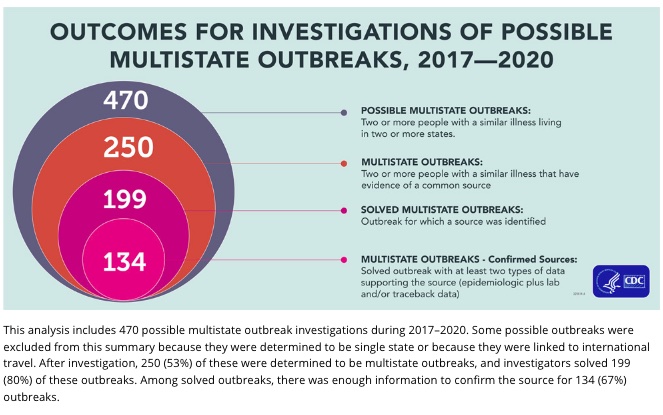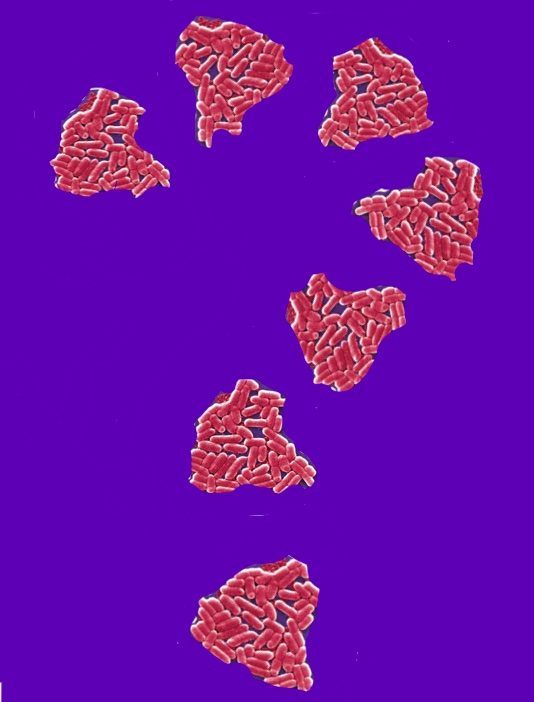Although hybrid iceberg/romaine lettuce is the suspected source of the E. coli outbreak linked to Wendy’s hamburgers and sandwiches, at this time, the CDC and FDA consider the food source of the outbreak unknown. The outbreak has sickened 97 people in six states. Ten people have developed hemolytic uremic syndrome (HUS), a form of kidney failure associated with E. coli infections.
If health officials don’t confirm the source before the outbreak ends, it will be the 13th time during the last two years that a publicly announced multistate E. coli outbreak has ended without a confirmed source. Here is a look at them.
How Outbreaks are Investigated
The Centers for Disease Control and Prevention (CDC) uses a national database called PulseNet to identify possible outbreaks. When someone is sickened with an infection caused by E. coli, Salmonella or Listeria, state health officials perform a DNA analysis on the bacteria cultured from the patient and upload the genetic “fingerprint” of that bacterial strain to PulseNet. When CDC investigators find fingerprints that closely resemble one another (they usually don’t use the word match), it means those patients were likely sickened by the same source. Then patients are interviewed about the foods they ate before they became ill and if meat or poultry are indicated, the U.S. Department of Agricultures’s Food Safety and Inspection Service (USDA FSIS) investigates. All other foods are investigated by the U.S. Food and Drug Administration (FDA).
Only a small portion of the outbreaks that the CDC investigates are publicly announced. The chart below was part of a recent CDC report called Summary of Possible Multistate Enteric (Intestinal) Disease Outbreaks in 2017–2020. It shows that 134 of 250 multistate outbreaks from 2017-2020 ended with confirmed sources. Not pictured is the number of multistate outbreaks that are made public. During that same time period, 59 multistate outbreaks were publicly announced, less than half of the multistate outbreaks with confirmed sources.

The CDC website lists multistate outbreaks announced from 2006 – 2022. Of a total of 181 outbreaks, 10 (including Wendy’s) had unknown food sources. All of them have occurred since 2012. And half were caused by E. coli. In fact, four of the E. coli outbreaks with unknown sources have occurred since 2020. And in all four of them, the suspected source was romaine lettuce or leafy greens.

FDA’s Mystery E. coli Outbreaks
Since 2020, the FDA has investigated 12 publicly announced multistate outbreaks. A confirmed food source was identified in five of them. Leafy greens were the suspected source for the two unknown source outbreaks in 2020. No suspected sources were revealed for the two unknown source outbreaks in 2021, one of which included a fatality. And in 2022, the Wendy’s outbreak is the only one of three unknown source outbreaks where a suspected food (romaine-iceberg hybrid lettuce) was identified.
USDA FSIS Mystery E. coli Outbreaks
Beef or ground beef was the suspected source for all six E. coli outbreaks that USDA FSIS has investigated since 2020. Since all of them ended as unknown source outbreaks and all of them occurred in 2021 and 2022, you have to go back to 2019 to find the most recent E. coli outbreak that USDA FSIS solved. The source of that one was ground beef.
Experienced E. coli Lawyers
Pritzker Hageman E. coli lawyers have represented clients in every major E. coli outbreak in the U.S. including dozens of clients in the Wendy’s outbreak. If you would like a free consultation with an experienced E. coli lawyer, please contact the Pritzker Hageman E. coli Legal Team. You can reach us by calling 1-888-377-8900, sending a text to 612-261-0856, or completing the form below. There is no obligation and you don’t pay us unless we win.

